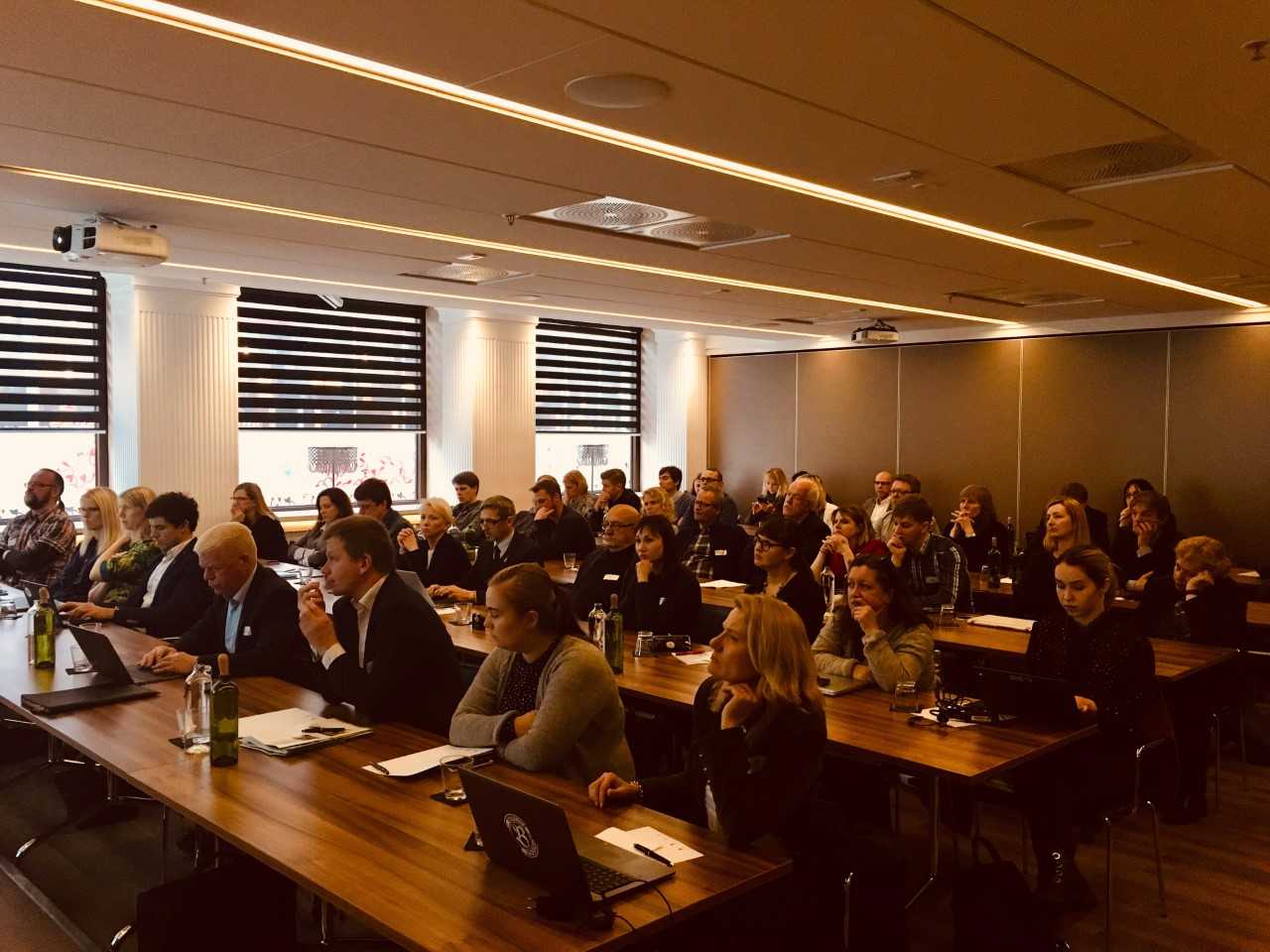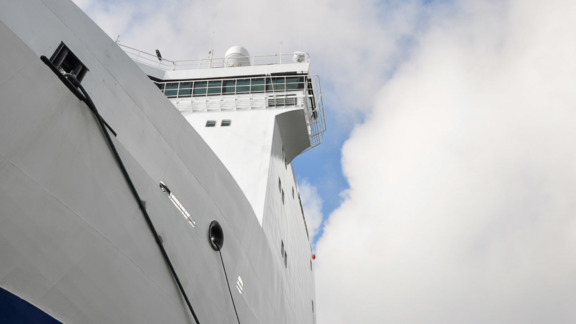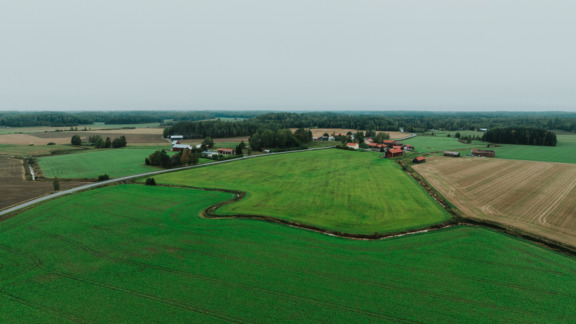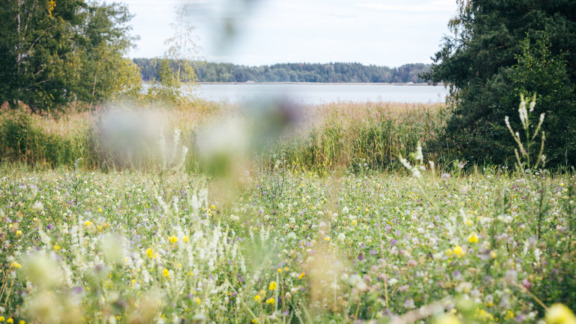Technologies to cut ammonia emissions discussed at international seminar
Ammonia emissions in agriculture represent 95% of all ammonia emissions in the Baltic Sea Region and most of this comes from livestock and manure management operations. Ammonia emissions drive particulate matter formation and thus seriously deteriorate air quality, causing hazards to human health. On farm level, ammonia emissions are but a health risk, also environmental and economic problem as much of the valuable nitrogen fertilizer is lost in the air during the manure handling chain if appropriate measures are not in place in the stables, storage and in field application.
BSAG participated in a three-year Interreg-funded project Baltic Slurry Acidification which ended in February 2019. The consortium of 17 partners from all countries around the Baltic Sea investigated and demonstrated the use of specific technologies to mitigate ammonia emissions by addition of acid in the slurry in different parts of the manure management chain. The results of the project were presented and widely discussed at the international seminar arrange in Jyväskylä, Finland in the context of the Knowledge Exchange Days on agri-environmental issues on 12-13 February 2019. The event, co-organized by the Finnish Ministry of Agriculture, Ministry of Environment and Rural Network gathered a wide national and international participation. Erik Sindhöj, the project coordinator from RISE, Sweden presented the acidification technologies (Slurry Acidification Technologies, SAT) and summarized that based on the project, the effect of the technologies on ammonia reduction is clearly positive with very limited negative effects observed. The presentation spurred active discussion and there was a lot of interest for more details, especially among those who had heard about these technologies earlier, based on research and field demonstrations by Natural Resources Institute Finland carried out since 2014. Those hungry for information can visit the project website to find all the reports published under different thematic components. All presentations from the event are available on the Rural Network website. Among them is presentation by Conrad Stralka of the Baltic 2020 foundation featuring an application of acidification technology on a pilot farm in Poland.
A dedicated seminar on the results of the Baltic Slurry Acidification project was organised on the previous day. This summarized the 360 degree insight to slurry acidification technologies carried out across the project’s thematic work packages. This assessment is presented in the specific reports and provides for an assessment of the environmental, agronomic and economic effects, lessons in practical implementation and from field tests as well as preconditions for supporting wider implementation of the technologies through policy and incentives. The broad pan-Baltic partnership, which included research, authorities, agricultural advisory organisations, farms and agricultural contractors, enabled to thoroughly evaluate the technologies and their implementation from different perspectives and in different agricultural context. Laboratory tests, field tests and demonstration investments using different types of slurry (pig and cattle) and digestates on different crops (grains and grasses) and on different soil types highlighted the differences and the need for farm-specific optimization in implementing slurry acidification technologies. The investments in the machinery for in-storage and in-field acidification made in six countries concretely connected the project with the end users and provide opportunities to continue to test and demonstrate the use of these systems. The practical aspects of using the SAT’s on farms was present throughout the project and the project produced lot of practically applicable information for farm entrepreneurs, contractors and advisors, as well as for authorities and regulators. For instance, working safety aspects are thoroughly covered. The tools produced for assessing economic and environmental implications can be used to consider how slurry acidification can respond to different objectives and what are the optimal framework conditions for their introduction in a palette of agri-environment and clean tech measures in agriculture.

The project concluded that regardless of the variability in local circumstances, slurry acidification – and the specific SAT’s in particular – could be introduced in all Baltic Sea Region countries. Only in case of Russia and Belarus some reservations remain, mainly due to the framework conditions and regulative frameworks.
“In concrete numbers, the six pilot investments made in the project help to save 67 000 kg nitrogen annually. This amount stays in the slurry to nourish the soil and plant growth, instead of evaporating in the air where it is transported to feed algae growth or formation of particulate pollution. The project calculated an overall theoretical potential for 10 000 new SAT equipment in the region, which would help the EU countries to meet 88% of their required ammonia emission targets under the NEC directive”, says Paula Biveson, the project communication manager from the Baltic Sea Action Group.
In order to discuss the implementation and regulative aspects of slurry acidification technologies with authorities and experts on the national level, dedicated round table discussions were organized in almost all countries over the final months of the project. An international policy workshop arranged in Jyväskylä after the main event provided an opportunity to summarize these discussions as well as for some country representatives to provide more specific insight to the relevant regulatory context. The outcome of these discussions highlight the importance of the urgency with NEC targets for ammonia, the stringency of regulation on nitrogen as factors that can increase the attractiveness for SAT’s. Also the tradition and present subsidies on agri-environment measures influence country level considerations. These same aspects, balancing with the stick and the carrot approaches, were also discussed in Brussels in November 2018 where BSAG organized an EU level stakeholder event on the topic.
The three-year project has compiled a thorough information package on the effects and implementation considerations of slurry acidification technologies (SAT) in the Baltic Sea Region. This opens for the possibility for more specific country, industry and farm level considerations as to whether and how to introduce these solutions for a wider use. The results and lessons of the project will be more widely spread and discussed over the next two years in the Interreg funded platform project SuMaNu, in which BSAG is also involved as a partner. Linking manure and agricultural nutrient issues to circular economy, the SuMaNu platform also provides for an international extension of the BSAG’s work on nutrient recycling in this sector.



